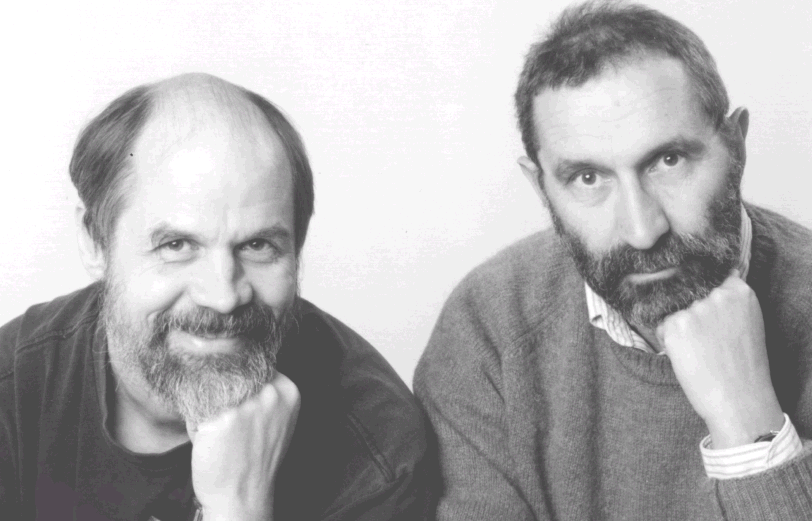New to Java? We'll help you get started with our revised beginner's tutorial, or our free online textbook.
|
|
 Get the latest Java books |
|
|
h t t p : / /w w w . j a v a c o f f e e b r e a k . c
o m /
|
||
|
Menu Articles Using Java Applets Looking for Java resources? Check out the Java Coffee Break directory! |
Java ProfilesAlexander Nakhimovsky and Tom Myers
Q: What do you see has been the biggest change affecting the Java community in the last year?A: Java is increasingly used for "enterprise applications", that is, large integrated middleware systems. There are several reasons for that, and one of them is XML. When XML had just been invented, Jon Bozak wrote a paper entitled "XML, Java and the future of the Web" in which he predicted that "XML will give Java something to do". This is indeed what's happening. Q: What are the advantages working with Java, as opposed to working with other technologies?A: Java is very well designed, and it was from the beginning designed for the Internet. A freshman in the third week of her first computer science course can write a program that can send an email from the.president@whitehouse.gov to all her classmates and parents back home- that's power. Try doing that in C++. Q: Why are Java and XML so compatible?A: One reason is that "Java is cross-platform code, XML is cross-platform data" (David Brownell). A deeper reason is that both Java and XML were invented with Internet in mind. It is very easy to send XML from one Java class to another, and the way Java operates, those classes can be anywhere on the network. Once at a destination, the XML can be either filtered and passed on to the next destination or displayed in the browser. This is perfect for Web applications. Q: What type of applications are XML and Java suited to? A: Any kind. Both Java and XML are truly general-purpose tools and they work together in very general ways. Where they particularly excel is in distributed Web applications. Q: What's your take on the range of XML parsers now available for Java? Is there a particular XML parsing library that you prefer? A: We have been using Sun's Project X library because Sun is the most likely source of a standard in that small area within the application where the code meets an XML data source. There are usually a few lines of code that are needed to instantiate a parser and give it something to parse, and it would be useful if those lines were the same no matter what parser you use. This has been Sun's objective. They recently released JAXP (Java API for XML Parsing) that provides a wrapper around actual parsers and makes it possible to write the requisite lines of code in terms of abstract classes that specific parsers can extend. Sun has also provided an actual parser to go with the abstract wrappers and the parser is quite good, fast and very highly compliant with the XML specification. There are also other excellent parsers out there, including those from James Clark, IBM, and Oracle; Microsoft's parser has also been greatly improved after David Brownell's study published in www.xml.com showed it to be less than fully compliant.
|
||||
|
|||||


 Alexander
Nakhimovsky and Tom Myers
are the authors of Professional Java XML Programming, a new title
by Wrox Press that covers the two hottest topics in programming over the
last few years - the eXtensible Markup Language and Java. We talk with both, to learn what they
think about Java & XML.
Alexander
Nakhimovsky and Tom Myers
are the authors of Professional Java XML Programming, a new title
by Wrox Press that covers the two hottest topics in programming over the
last few years - the eXtensible Markup Language and Java. We talk with both, to learn what they
think about Java & XML.
 Q:
Thanks you both for your perspective on the eXtensible Markup Language and Java.
Their book "Professional Java XML Programming" is published by Wrox Press.
Q:
Thanks you both for your perspective on the eXtensible Markup Language and Java.
Their book "Professional Java XML Programming" is published by Wrox Press.